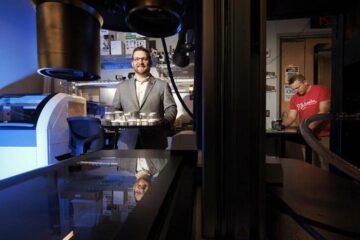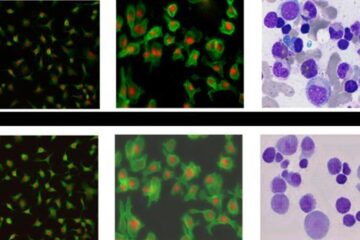Self-amputation: Gecko's tail is its insurance policy

Evolutionary biologists Timothy Higham of Clemson and Anthony Russell of Calgary presented their findings in “biology letters” published online Sept. 9th. Their article is titled, “Flip, flop and fly: modulated motor control and highly variable movement patterns of autotomized gecko tails.” The Web site is http://rsbl.royalsocietypublishing.org/content/firstcite
“Autotomy is the process by which an appendage is voluntarily shed by animal. A number of reptiles, amphibians, mammals and many invertebrates developed the defense mechanism over time,” said Higham. “Some geckos' severed tails can move repeatedly, allowing the gecko to escape and grow a replacement. It's like a gecko's personal injury insurance policy.”
Higham and Russell explored how the tail continues to function, using motion to entice a predator while the gecko escapes.
The research shows that a severed – autotomized – tail of leopard gecko makes four to eight rhythmic moves per second with one or two complex movements – dramatic flips or lunges – during the first 50 seconds of its separation.
How does the tail do it? The scientists theorize that central pattern generators in the tail control the actions. Central pattern generators are made up of a network of nerve cells that enable repeatable pattern of behavior, such as chewing, walking, flying.
The gecko study adds to the evidence that central pattern generator networks can function without being linked to a brain or central nervous system. The findings present the prospect that human central pattern generators could play a role in restoring motion to people with spinal injuries.
“The autotomized gecko tail may be an excellent model for understanding the spontaneous activity that is sometimes observed following partial and complete spinal cord injury,” conclude Higham and Russell.
Media Contact
More Information:
http://www.clemson.eduAll latest news from the category: Life Sciences and Chemistry
Articles and reports from the Life Sciences and chemistry area deal with applied and basic research into modern biology, chemistry and human medicine.
Valuable information can be found on a range of life sciences fields including bacteriology, biochemistry, bionics, bioinformatics, biophysics, biotechnology, genetics, geobotany, human biology, marine biology, microbiology, molecular biology, cellular biology, zoology, bioinorganic chemistry, microchemistry and environmental chemistry.
Newest articles

Bringing bio-inspired robots to life
Nebraska researcher Eric Markvicka gets NSF CAREER Award to pursue manufacture of novel materials for soft robotics and stretchable electronics. Engineers are increasingly eager to develop robots that mimic the…

Bella moths use poison to attract mates
Scientists are closer to finding out how. Pyrrolizidine alkaloids are as bitter and toxic as they are hard to pronounce. They’re produced by several different types of plants and are…

AI tool creates ‘synthetic’ images of cells
…for enhanced microscopy analysis. Observing individual cells through microscopes can reveal a range of important cell biological phenomena that frequently play a role in human diseases, but the process of…





















